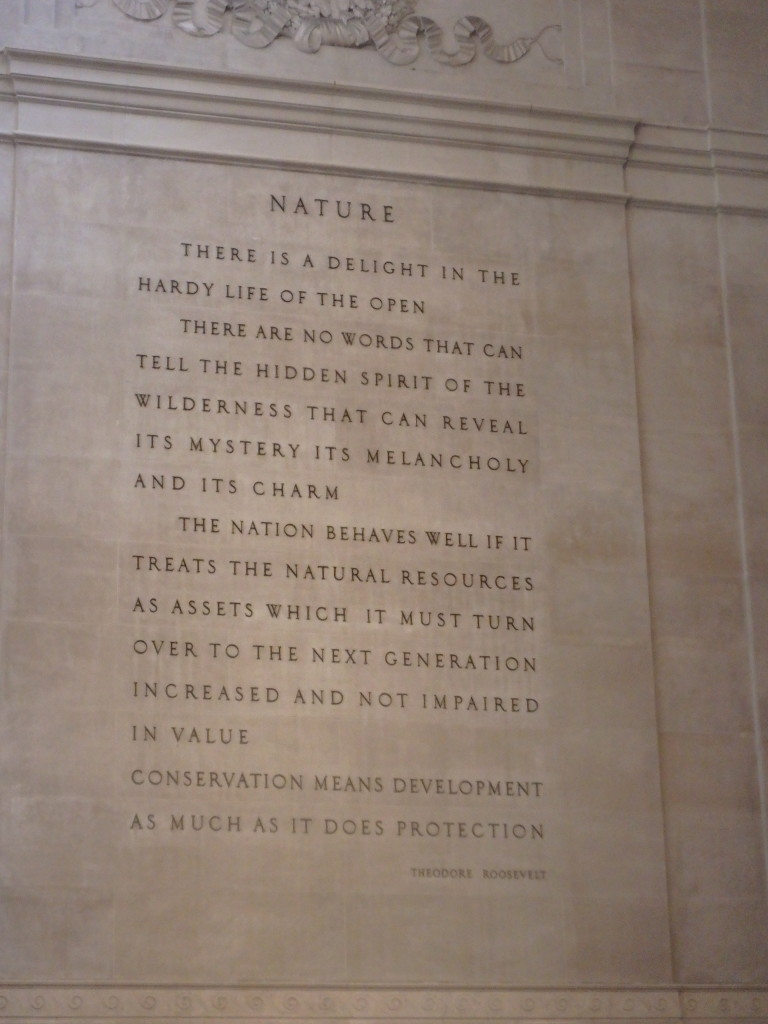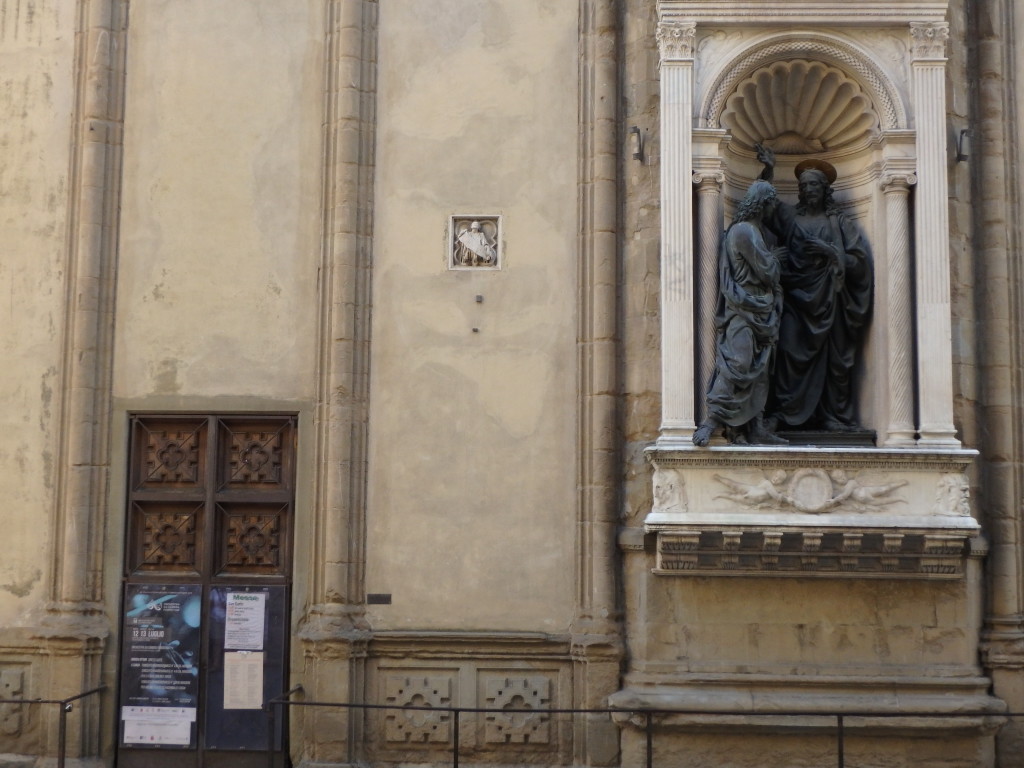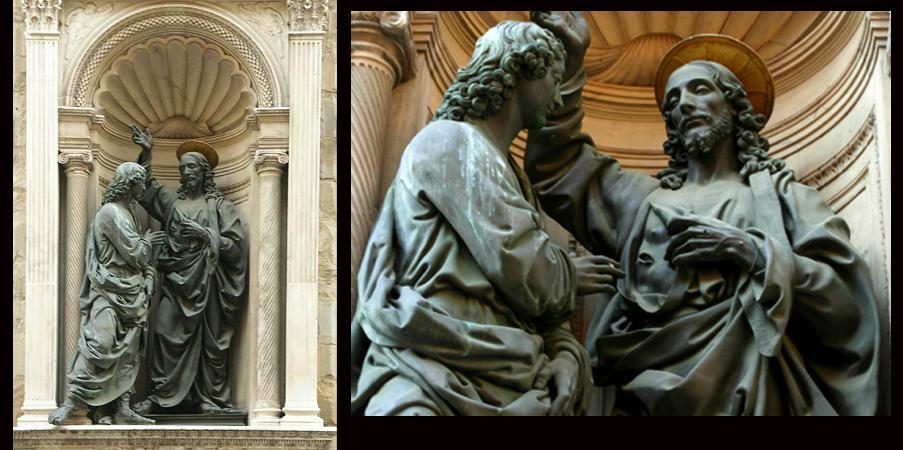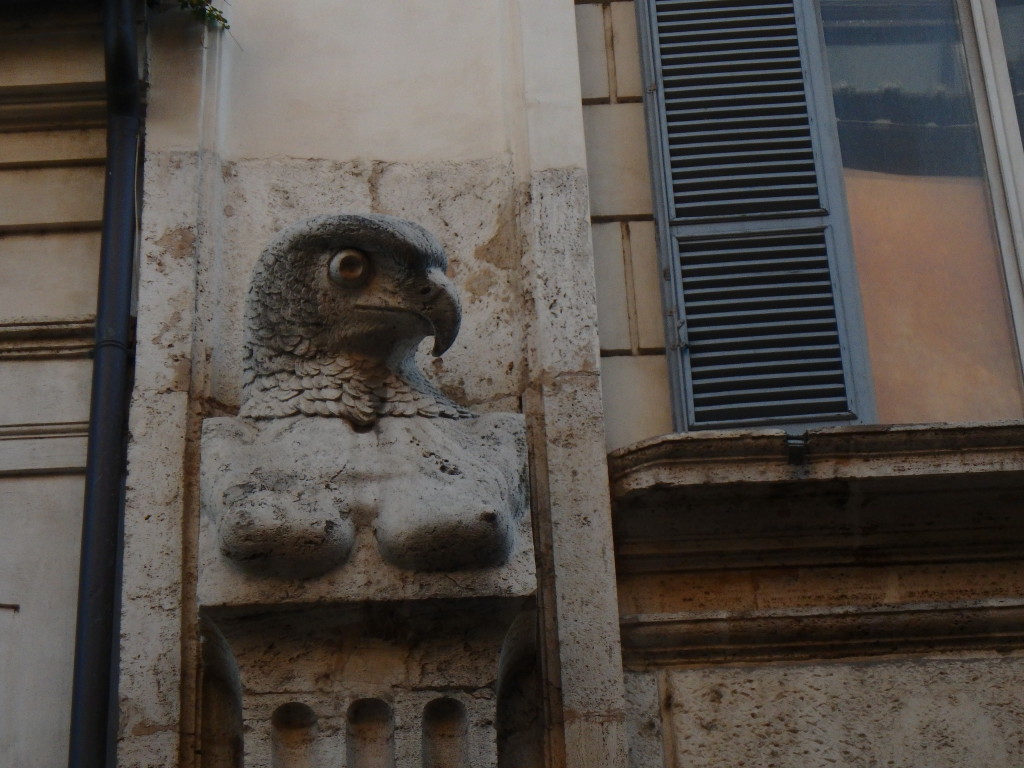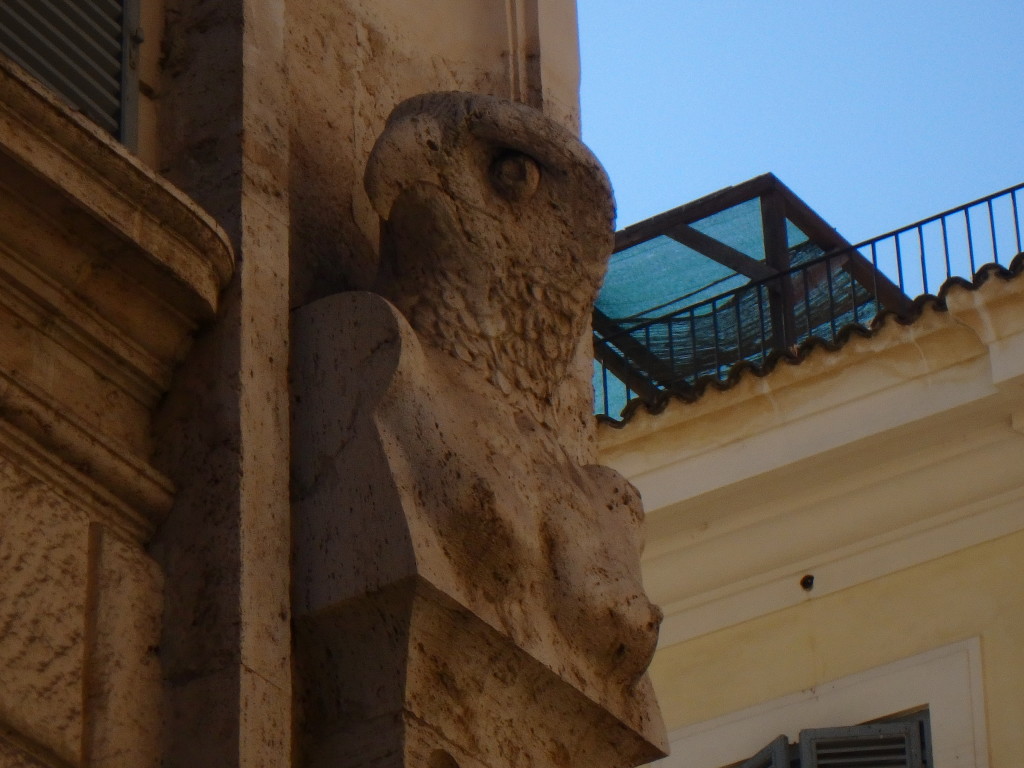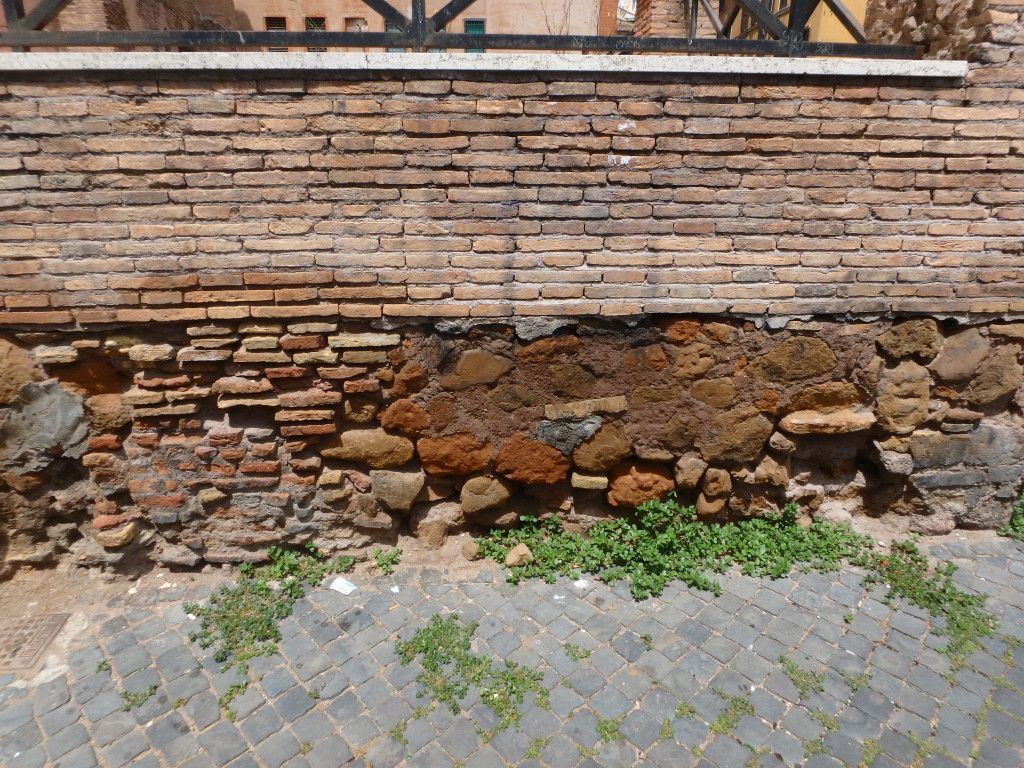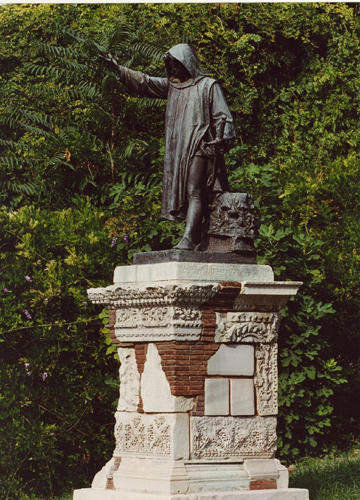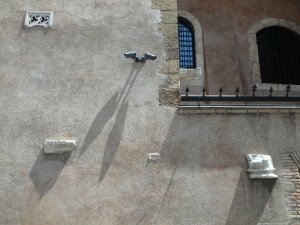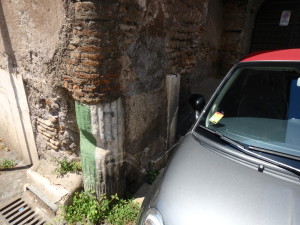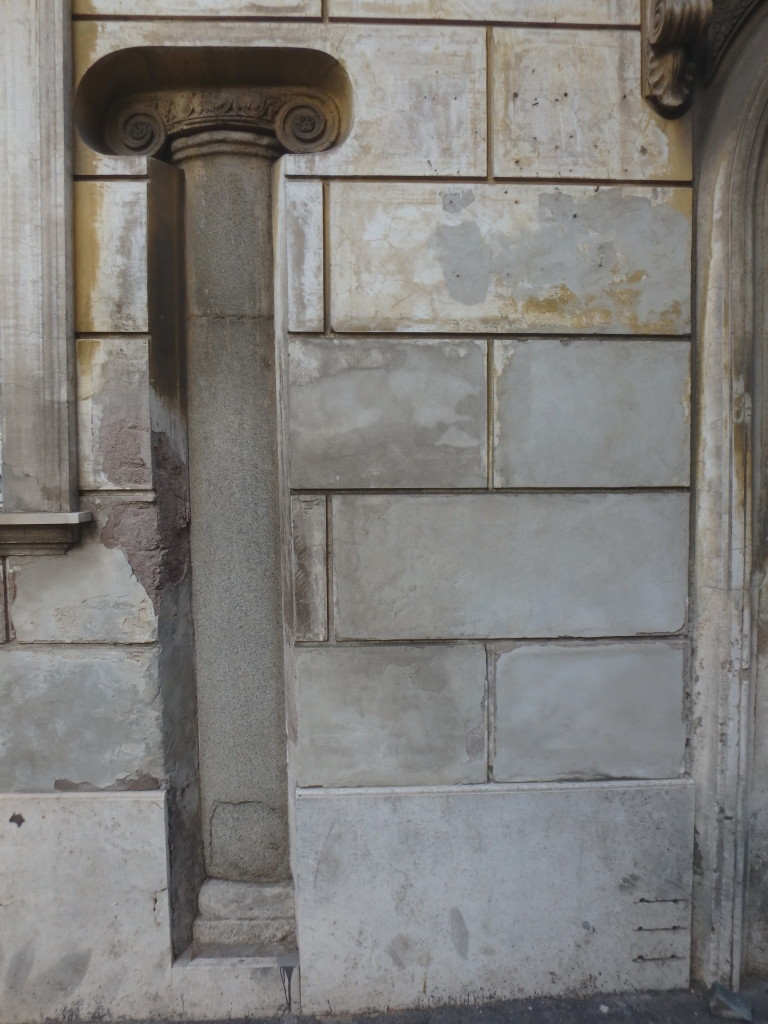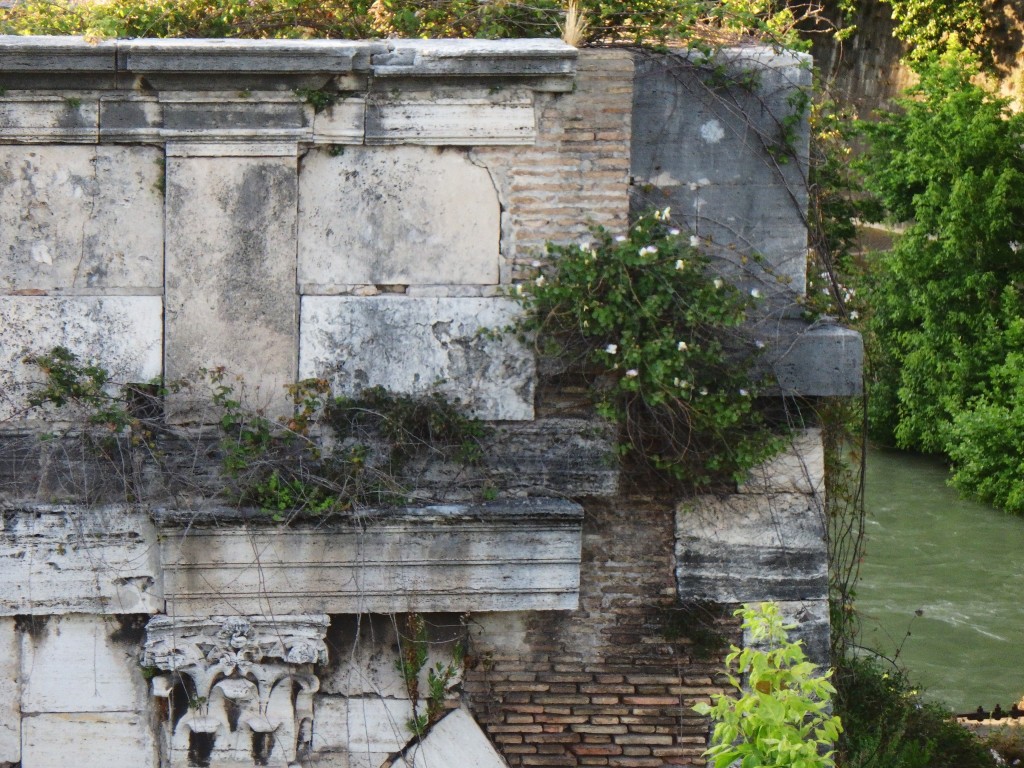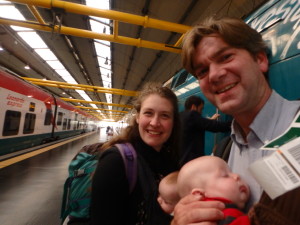 I consider myself an old pro at backpacking – I started traveling in Europe with a backpack in 1994, coming back many times (never gone longer than eight months, but that’s still a pretty long time), and doing a lot of pack-hiking trips in the U.S. When I do long-distance biking, I strap a backpack onto the back of my bike. It’s what I know best. But how does traveling with two six-month-olds change things?
I consider myself an old pro at backpacking – I started traveling in Europe with a backpack in 1994, coming back many times (never gone longer than eight months, but that’s still a pretty long time), and doing a lot of pack-hiking trips in the U.S. When I do long-distance biking, I strap a backpack onto the back of my bike. It’s what I know best. But how does traveling with two six-month-olds change things?
Well, by the time we arrived at Roma Termini, and laid down our duffel bags and heavy backpacks, and we took the babies out of their baby carriers, we had an answer: traveling with six-month-olds is a lot heavier. It’s not just that you’re carrying baby gear and baby clothes – the gear can be minimized, and the clothes are small – it’s that you’re also carrying can i buy Gabapentin in mexico them. And you have to carry them up front, where an extra twenty pounds (which is about what they weigh nowadays) really does make a difference. It’s like carrying a Lewis and Short Latin dictionary – and a Liddell and Scott Greek lexicon – and a Webster’s unabridged English dictionary everywhere you go. In addition, of course, to your normal backpack. Now that I’m older and a bit stronger, I think I was a bit cavalier about the extra weight. But with kids in tow, you really have to be ruthless about what you bring. You figure out how much stuff you can comfortably carry, and then subtract the child’s weight from it: that’s how much you should allow yourself to pack. Strollers might be nice, but in Italy they are mostly impractical, where you have to deal with cobblestones, narrow walkways, steep hills, multiple forms of public transit, stairs, or crowds. You have to be ready to carry.
But we had made it to the train station – though already sweaty and shoulder-sore just from a walk to the Metro, and a walk from the Metro to the train station. This was the beginning of the on-the-road portion of our summer. We had discussed renting a car, and Catherine likes buses, which are cheaper, but it does seem that the train is probably the best way to travel with kids. They’re not strapped in to a car seat, and they have the benefit of continual body contact with you; you can walk them around the train, and find them new sources of amusement; and it’s relatively spacious. Italian trains also typically have empty seats, so we could move them around. The seats are the only place to change babies – the bathrooms are too small and have no flat surfaces – so empty seats were particularly useful.
On most of my trips I’ve maintained spontaneity, often arriving in places without accommodation worked out beforehand, but that’s not a luxury for travellers with kids. So we’ve switched over to Airbnb, which seems to offer more than hotels do anyway. Having a kitchen is particularly useful for us, because another thing we generally need to forgo is many meals out. For one it’s expensive, and secondly eating out is not ideal with children. Our kids in general have been excellent in restaurants, but it works much better in the United States, where service is snappy and you can get in and out of a restaurant within a half-hour without too much trouble. In Italy you’re lucky if you’ve gotten any food by then. We’ve been asking the waiters to do everything as veloce as possible, but culture tends to win out.
And already we know a few things about what life with twins is like: you trim your ambitions to what is possible, and satisfy yourself with seeing a good thing or two in a day; which is enough, I think. If you do two museums in a day, you likely will only remember one anyway. And – this is the thing I miss the most – you lose a lot of your time for quiet reflection. If you get a good visit in a museum, with the kids happy or sleeping, then afterwards you don’t have time to write about it – you have to spend some time playing with them, entertaining them, comforting them, or whatever form the attention they require may take.
But in exchange for this you get to see the world through their eyes. Things which you would walk right by without noticing, to them are sources of utter wonder: the dripping of water, the fluttering of a bird, a source of light, an old woman sitting in a cafe, the colors of a plate of food, the feel of a marble column – these things will not only transfix them, but make you see them as well.
And you observe another remarkable thing when traveling with children. Dostoevsky writes about how a happy memory from childhood has incredible, even salvific, power over us. I think this is true, though the reason why is not entirely clear. But I am beginning to see a possible reason: in our childhood, without even knowing it, day after day we are doing good work in the universe. Children bring joy to the people around them, and you see this especially when you are exposed, as backpackers are, to so many people. Beggars who otherwise look abstracted and despondent – their souls return to their eyes in a moment when a child smiles at them. Tourists who are bored, old people who are lonely, all sorts of people will light up at the sight of a happy child, and we often stop to let people enthuse over them for awhile. Sometimes with a baby on my front I even steer toward a sad face, just to see it light up for a moment. Catherine and I have discussed how we feel almost something like an obligation to bring our children out in public, just to let our children do their good work in the world. We’ve discussed her maybe visiting an old folks’ home with them regularly when we get back to America. To me there is something of this causing the phenomenon that Dostoevsky identifies: any kind of link with our childhood is a link to a time when our joy was perfectly contagious, spilling out of us, and not selfish or self-contained.
And the last thing to say about traveling with twins is how much of a joy they are to us, their parents. Travel is intimate; it’s a break from routine, and habitual comforts. When we travel, we have no room of our own, no blanket of our own, none of the comforts that come from familiar things – and so we turn to our companions. They become our home. And so it is for our family on the road. We are experiencing the world together. They will not remember their hands being held as they tried to step their way across the marble floors of San Clemente in Rome – but Catherine and I will. And we will remember how our experience of the world was greater because we were with each other, and they were there with us. And how by the time they left to return to the United States, a third of their time in the light had been spent in Italy – how it was there, on the floors of churches in Rome and Venice that they first began to sit up, how they heard Italian every day from their admirers, and how the first foods they ever reached for were pizza and gelato and Italian bread. Every day from them we are reconnected to the wonder of being alive, and the wonder of sharing that gift of life – that we do not have to do all this alone. And every day we know we are lucky – lucky to be together, lucky to be blessed with these two children, lucky to be free to wander, lucky to be in this happy, sunny land – but more than anything else, lucky to be alive. Camus writes, at the end of The Stranger, that “Every man alive is privileged; there is only one class of men, the privileged class. All alike would be condemned to die one day; his turn, too, would come like the others.’” I think about those statements a great deal, when I think about the people I have known who are no longer alive; and I think it is important to say that Camus did not know any more than anyone else what happens after we die. But for those who are called to God’s table of life, we are indeed all one privileged class; all other distinctions fade before this one infinitely royal gift. And all those who really love know that we are not meant only to rejoice in our own life, but in all the equally precious lives around us.
